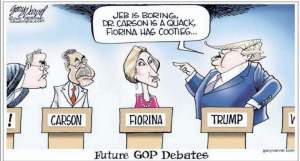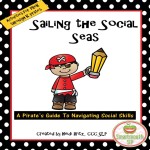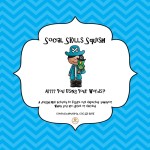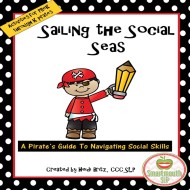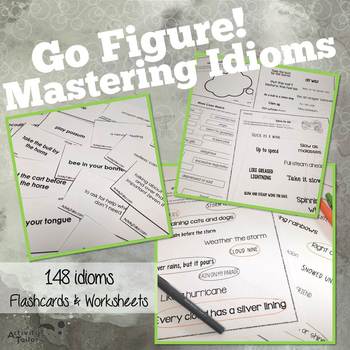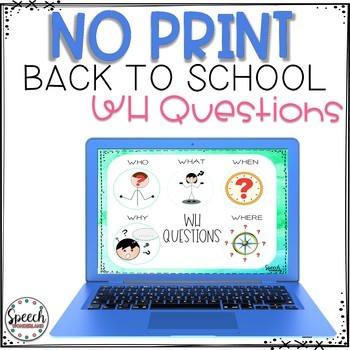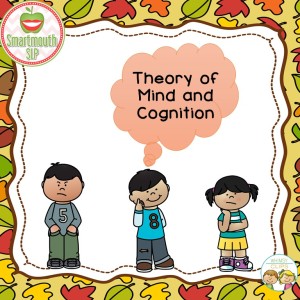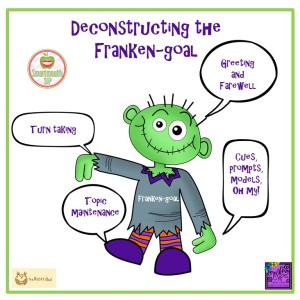 I read a lot of IEPs during the school year as I supervise CFs and mentor new hires in my large county of almost 200 SLPs. I support all areas of communication with my speechies, but social language is the area near and dear to my heart. Because of this, I see a lot of goals written regarding conversation and turn taking. Turn taking in and of itself is an important skill, both verbally and non-verbally. We can’t function as a “me first/all about me” community…unless you have a show on the E! network. However, I cringe a bit when I come across a goal that looks like this:
I read a lot of IEPs during the school year as I supervise CFs and mentor new hires in my large county of almost 200 SLPs. I support all areas of communication with my speechies, but social language is the area near and dear to my heart. Because of this, I see a lot of goals written regarding conversation and turn taking. Turn taking in and of itself is an important skill, both verbally and non-verbally. We can’t function as a “me first/all about me” community…unless you have a show on the E! network. However, I cringe a bit when I come across a goal that looks like this:
“The student will participate in 4-6 turn taking cycles, maintaining the topic of conversation and appropriate body orientation, with appropriate greeting/farewell, on three trials each session with no more than one cue.”
To be fair, most of these Franken-goals come with the student from another county or state. The poor SLP usually looks at me with terror in their eyes when they realize that they will have to take data on this goal (in addition to the many other goals that are also in the IEP). I suspect an advocate may have been involved in the construction of this mash-up of many different goals into one. I try to reassure the SLP that we are going to dismantle the goal piece by piece and we will build it back into more functional, measurable and understandable goals. I also include the parent in this conversation so that they are reassured that we are still going to address the areas of concern, and that they are part of our team. Michelle Garcia Winner’s Think Social materials have a wealth of well written goal suggestions if you need some ideas.
Most of the pieces of this goal are not wrong or bad, in fact they may be necessary for the student to progress not only socially but academically as well in class discussions. Keep in mind that for our kids with social language impairments, we are measuring their progress against themselves, not necessarily what their neurotypical peers are doing. Let’s start to deconstruct and take a look at the separate areas embedded in the goal:
4-6 conversational turn taking cycles: Do most adults continue a topic through 4-6 turns? Not often, but a first grader? Nope. Maybe 2-3 at most before the topic changes in natural conversation and definitely not 4-6 cycles, three times in a thirty minute session. We need to break down the steps to having a conversation, practice often, start small and build from there! I have a free conversation football game that includes these steps in my TPT store HERE .
Topic maintenance: is it a topic of the student’s choosing or a random topic assigned? I don’t know about you, but I am willing to talk a lot more about something I am interested in. Are they able to transition to related topics or change the topic completely? Do they only talk about one topic all the time?
Body orientation can mean a lot of things. Is the goal to turn your body towards the person you are speaking with? Turning your face towards the person and engaging in eye contact? Adjusting personal space with other people in the conversation? Whole body listening skills are critical to participating successfully in a conversation.
Greeting/Farewell, ugh. I really don’t like this as a goal at all and would much rather use peer models and reinforce natural ways to walk into and out of a room. Very few of us always say “hello” when we walk into a room of our peers and “good-bye” every time we leave. My teens tip their chin up and give a short, “s’up?” and my fellow SLPS in the building give me a little wave as they walk by me in the halls. We tap into a lot of social skills during therapy naturally, without having to write a goal for each and every one.
Cues: what kind of cues? Verbal, visual, tactile? The goal is independence, so why write in a generic “no more than one cue”? Note how you are cueing, modeling or prompting your students in your data as you scaffold towards independence. Don’t forget to share what works for your kids with the adults in their world for carryover.
I really think focusing on 3-5 clear goals is PLENTY, just make them understandable, measurable and functional for your student. An IEP is a fluid document, so I would rather set a few, reachable goals and then meet to add more within the year rather than try to collect data on a bunch of huge goals that may not help our students progress outside of the therapy setting. No more Franken-goals, they are much too scary!
